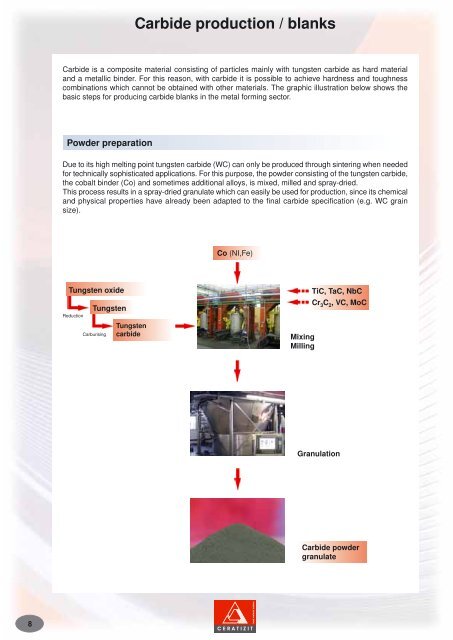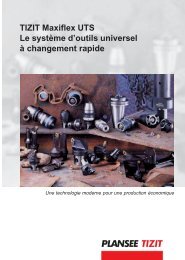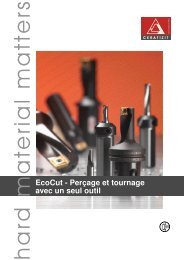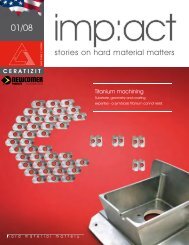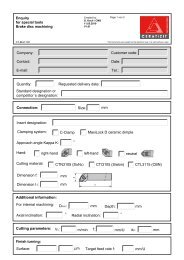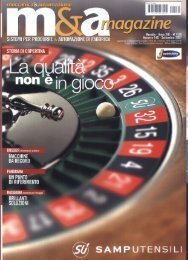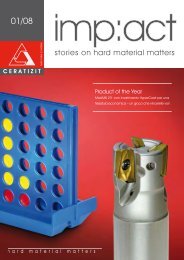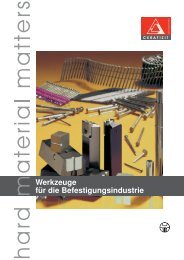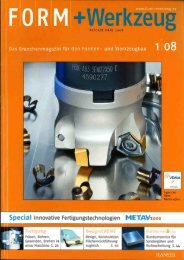Wear parts
Wear parts
Wear parts
You also want an ePaper? Increase the reach of your titles
YUMPU automatically turns print PDFs into web optimized ePapers that Google loves.
8<br />
Tungsten oxide<br />
Reduction<br />
Tungsten<br />
Carburising<br />
Tungsten<br />
carbide<br />
Carbide production / blanks<br />
Carbide is a composite material consisting of particles mainly with tungsten carbide as hard material<br />
and a metallic binder. For this reason, with carbide it is possible to achieve hardness and toughness<br />
combinations which cannot be obtained with other materials. The graphic illustration below shows the<br />
basic steps for producing carbide blanks in the metal forming sector.<br />
Powder preparation<br />
Due to its high melting point tungsten carbide (WC) can only be produced through sintering when needed<br />
for technically sophisticated applications. For this purpose, the powder consisting of the tungsten carbide,<br />
the cobalt binder (Co) and sometimes additional alloys, is mixed, milled and spray-dried.<br />
This process results in a spray-dried granulate which can easily be used for production, since its chemical<br />
and physical properties have already been adapted to the final carbide specification (e.g. WC grain<br />
size).<br />
Co (NI,Fe)<br />
Mixing<br />
Milling<br />
TiC, TaC, NbC<br />
Cr3C2 , VC, MoC<br />
Granulation<br />
Carbide powder<br />
granulate


